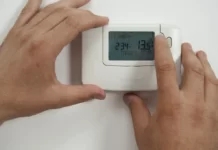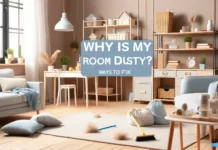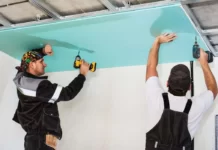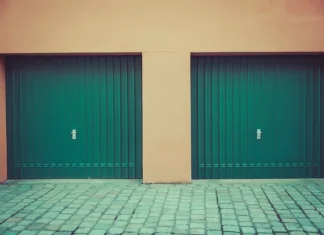Wood floors give homes and buildings a classic and elegant look, but they also have pros and cons. Ultimately, whether or not you install wood floors will depend on your tastes, budget, and way of life. If you’re considering getting wood floors, consider the pros and cons and choose a reputable installer to ensure the job is done correctly. Wood floors that make noise can be annoying and make your home less peaceful. They can also sign more significant problems with your floor, like gaps or boards that aren’t tight. There are several ways to fix squeaky wood floors and make your home quiet again. In this article, we’ll talk about some of the best ways to stop creaking wood floors. Let’s discuss some of the pros and cons of wood floors:
Advantages of Wood Floors:
• Aesthetic Appeal: The look of wood floors is one of the best things about them. They give any space a natural and warm look and can raise the value of a home.
• Durability: Wood floors are durable and can last decades if cared for and kept in good shape. They are resistant to wear and tear; if they get damaged or worn, they can even be refinished.
• Versatility: Wood floors come in many colors, species, and finishes, which means they can be used in many ways. They can be put in almost any room and go with any decor style.
• Easy to Clean: Wood floors aren’t too hard to keep clean and are in good shape. You can keep them looking their best by sweeping and mopping them often.
• Wood floors don’t trap dust, dirt, or allergens: So they are a better choice for people with asthma or allergies.
But Still, Wood Floors Have Many Drawbacks:
• Cost: One of the worst things about wood floors is how much they cost. Putting them in can be pricey, especially when choosing rare or unusual species.
• Moisture-sensitive: Wood floors are sensitive to water and can warp or buckle if wet. They shouldn’t be used in places with much moisture, like bathrooms or kitchens.
• Easily Scratched: Scratches are easy for wood floors because furniture and heavy foot traffic can easily scratch or dent them. With regular upkeep, like refinishing, they can look their best.
• Can Make Noise: Wood floors can make noise, especially in homes or apartments with more than one floor. Noise transmission may need to be cut down by using soundproofing.
How to Stop Wood Floors from Creaking
Wood floors that make noise are common, especially in older homes. They can be caused by several things, like changes in humidity, loose boards, or gaps in the flooring. Noisy floors can be annoying and frustrating, but they are easy to fix. This article will discuss some of the best ways to stop squeaky wood floors.
1. Find out what’s making the noise
Before you can fix a floor made of wood that creaks, you need to find out what’s wrong. Slowly walk across the floor and listen for places that make noise. Use masking tape or chalk to mark these spots so you can find them again easily. As soon as you know where the problems are, you can start fixing them.
2. Tighten Loose Boards
Loose boards are often the cause of creaky wood floors. If you step on a board and it moves up and down when you do, it’s probably loose. You’ll need to tighten the board by driving screws into the subfloor below to fix this. Use a drill and wood screws slightly shorter than the board’s thickness. Put the screws through the board and into the subfloor at an angle. Be careful not to tighten the screws too much, or the wood could crack.
3. “Grease the Wheels”
Putting oil on the boards is another way to stop creaky wood floors. This method works especially well for creaked floors because the boards rub against each other. You can grease the boards with talcum powder, graphite powder, or bar soap. Put the lubricant between the boards where they will touch. This will cut down on the rubbing and stop the creaking.
4. Fill in the holes in the floor
If your wood floors creak because there are spaces between the boards, you will need to fill these spaces to stop the creaking. You can fill the holes with wood putty or filler. With a putty knife, spread the putty or filler into the holes. After it has dried, sand the surface smoothly. Make sure to choose a putty or filler that matches the color of your flooring.
5. Think about hiring an expert
You might want to hire a pro if you don’t feel confident fixing your creaky wood floors independently. A flooring contractor can look at the situation and tell you what you should do next. They might be able to stop the creaking by tightening loose boards, filling in gaps, or even replacing broken boards.
Conclusion
Wood floors have been popular for centuries because they give homes and buildings a classic and elegant look. But, like any other flooring material, wood floors have pros and cons. Wood floors that make noise can be annoying, but they don’t have to be a long-term problem. You can stop squeaky wood floors by finding out where the noise is coming from and fixing it. This will bring peace back into your home. There are many good ways to fix creaky wood floors. You can tighten loose boards, lubricate the boards, fill gaps in the floor, or hire a professional.












